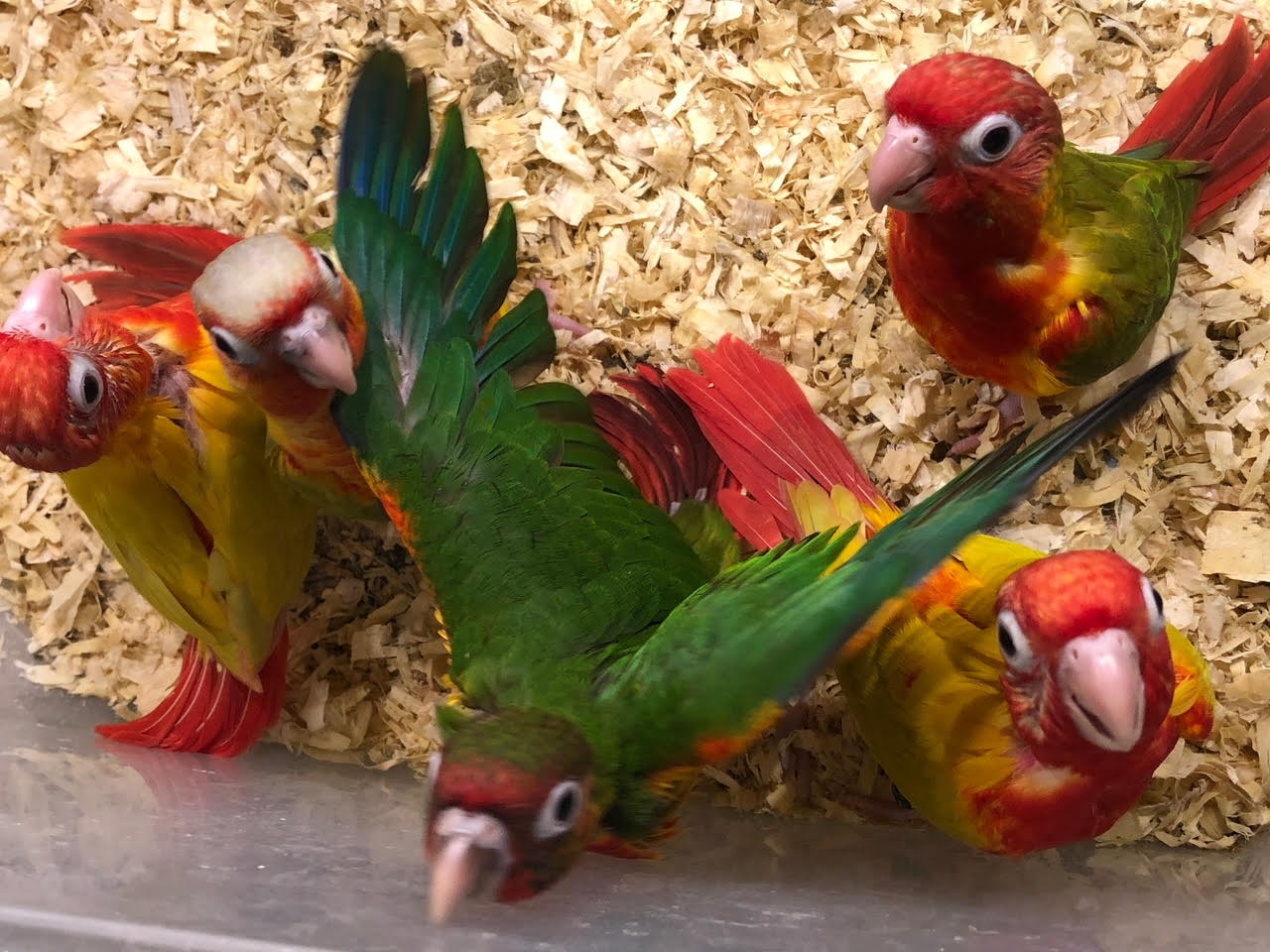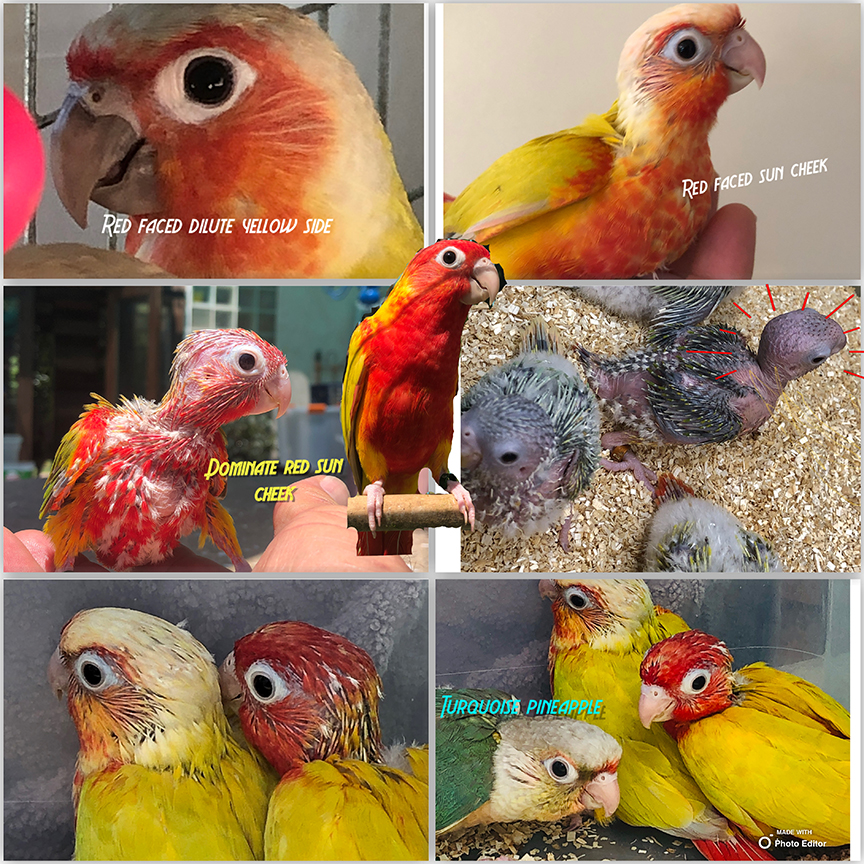|
|
|
|
|
|
|
|


 |
 This photo is of a Dominant Red Pineapple Green-cheeked, showing the moist feathers around the runny eye condition this mutation color often has for the first year. This issue goes away after the first year of life. |
 The bird on the right is a Yellow-sided Dominant Red chick. This photo shows how it lacks the down feathers that the chick on the left has. |
 Here they are again as they get older. The Dominant Red is now on the left. |
 |
 feathers that the other three chicks have. |
 |
 |
